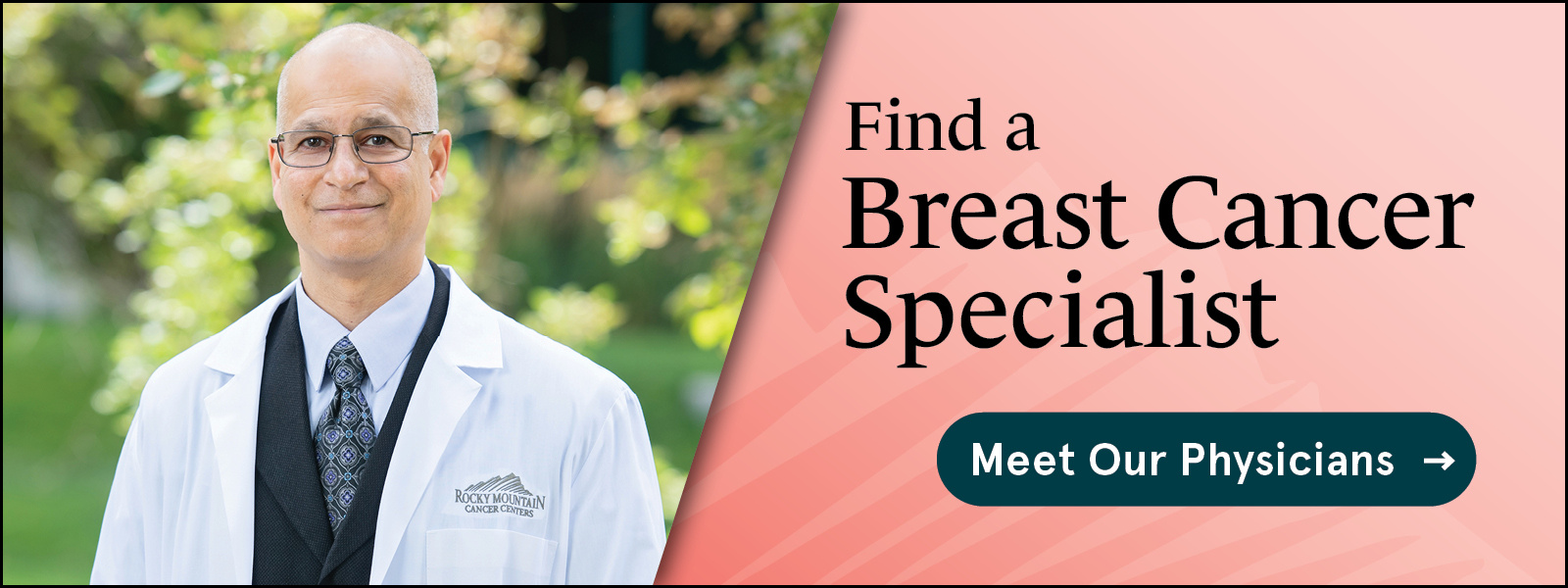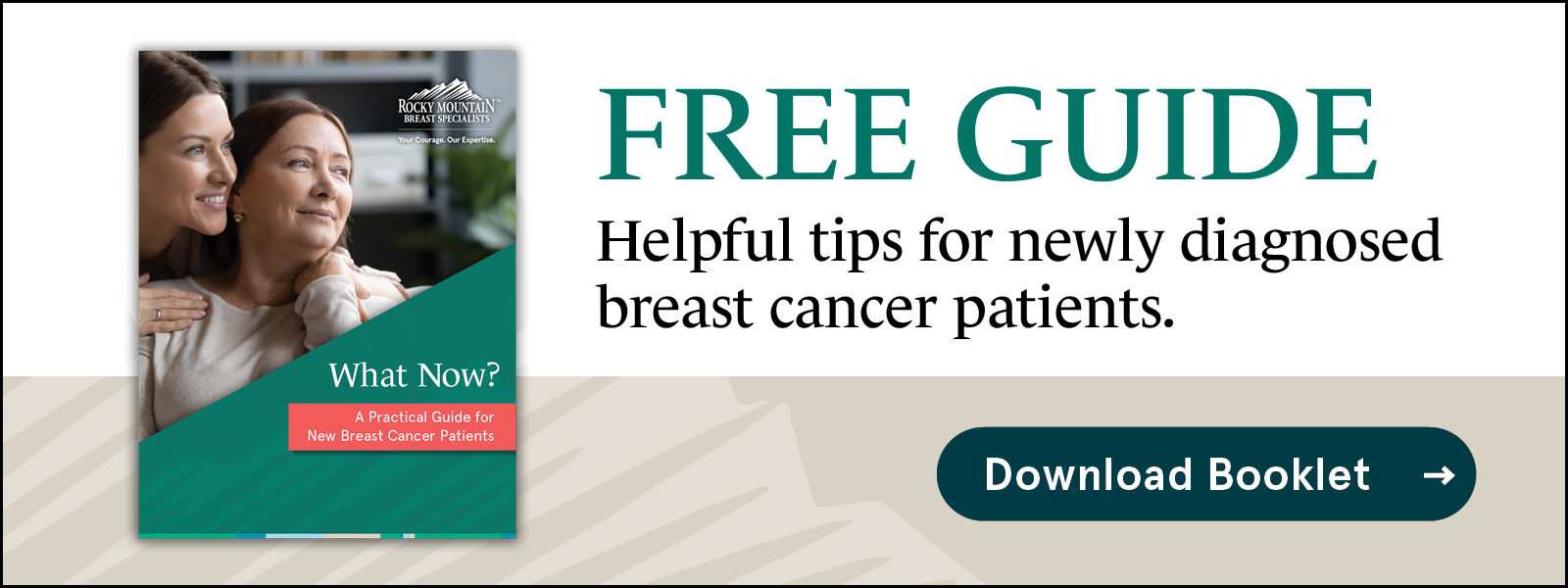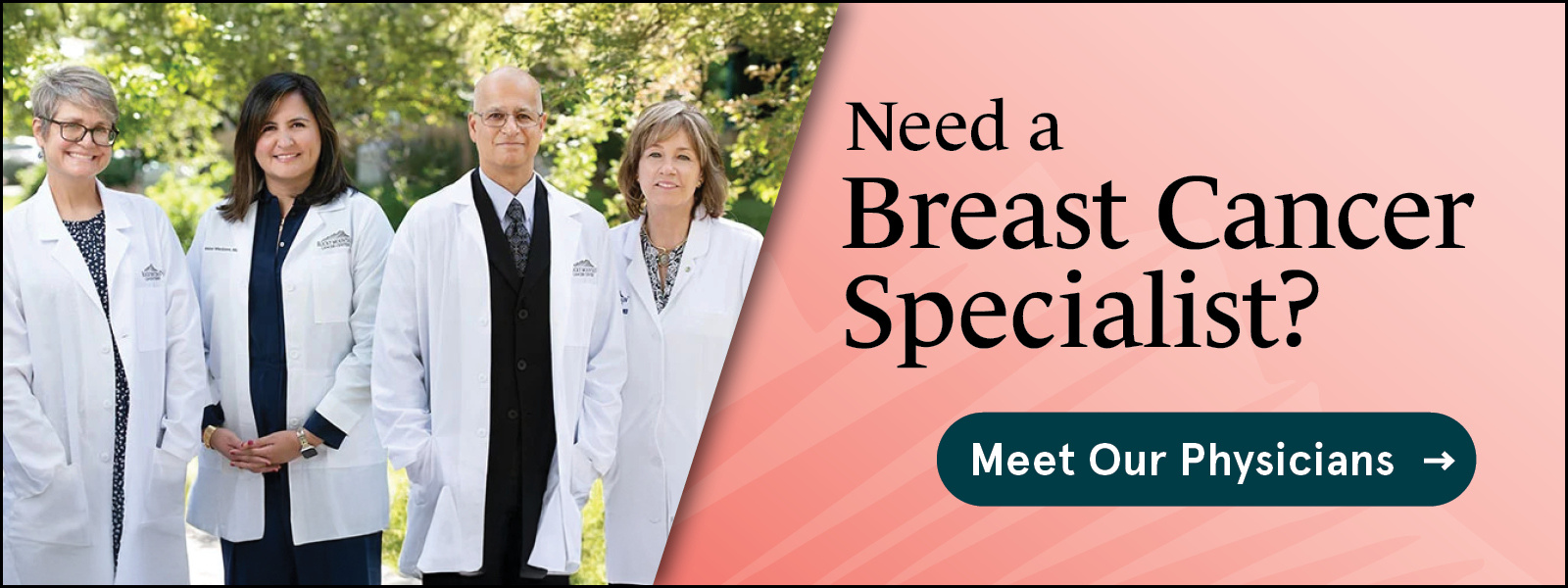Learning How to Make Cancer Treatment Decisions
4 min read

After 20 Years Working in Cancer Treatment, Elaine Had to Learn About Cancer from the Other Side: as a Patient
When Elaine McDonald first noticed pain in her right breast in November of 2020, she wasn’t concerned. After 20 years working in diagnostic imaging at Rocky Mountain Cancer Centers (RMCC), her understanding of breast cancer was that it rarely caused pain. However, this was the first of many new lessons about cancer she would learn, including how to make cancer treatment decisions and what it’s like to be a cancer patient.
“What I thought I knew about cancer, I didn’t know,” Elaine said almost a year after she was diagnosed with invasive ductal carcinoma, a type of breast cancer. “It’s true, we healthcare professionals are the worst patients. You would give different advice to a friend than you follow yourself.”
Learn more about the symptoms of breast cancer.
But Elaine was fortunate and feels grateful: her cancer was discovered when it was still small (about a centimeter) and had clear margins. This means it hadn’t metastasized and didn’t involve the lymph nodes. So, she was able to treat it through a lumpectomy, a short-term radiation treatment administered over one week and seven chemotherapy treatments.
The goal of the chemo, Elaine explained, “was not to cure anything but more of an investment to prevent recurrence. People would try to encourage me to ‘fight the cancer,’ and I’d say ‘I’m not fighting anything right now. I’m just protecting my future.’”
Learning How to Make Cancer Treatment Decisions
Despite Elaine’s numerous personal and professional connections in cancer care, she rarely sought advice from others when faced with decision-making. The only people whose opinions she sought were her two adult children. Instead, she said she had to dig deep inside and learn how to make cancer treatment decisions that were right for her.
“You actually have a lot of choices in cancer treatment,” Elaine said. “You’re not forced into anything. In fact, you have so many choices, it’s kind of overwhelming.”
Thus, Elaine developed a process – that was part soul-searching and part rational evaluation – to guide her through making cancer treatment decisions. It’s an insightful, four-part evaluation that helped her identify the decisions that were right for her.
For every decision – from the schedule of treatments to choosing between a lumpectomy or complete mastectomy – Elaine considered five questions:
- What is vital to me? (When you’re faced with decisions, you want to go to your friend or doctor and say ‘what would you do?’ but I didn’t do that because they are not going through it. No one else’s opinion meant as much as my own.)
- How might it affect my kids? It was critically important to me to be totally transparent with info with my kids. And they actually appreciated that. They wanted to be involved, at least in knowing what I, and they, were dealing with.
- How will I engage my support system? This was a big one. It’s so hard for most of us to ask for help and accept help. That was hard for me, I had to really think about that. When someone says “what can I do to help?” you have to think about what you can give them. People are glad to have something to do, but they don’t know what. You have to give them guidance.
- What will I do to handle this spiritually, mentally, and physically? You have to look for a variety of tools and tricks to help yourself feel better. Your care team is your greatest resource for this.
- Last but not least, what gives me the most optimistic chance of survival without recurrence?
Leading RMCC’s Imaging Department Did and Didn’t Prepare Her to Be a Cancer Patient
Elaine had started working as a PET technologist at RMCC nearly 20 years ago. And, as the department grew – from one location to eight locations, plus a mobile unit – her responsibilities grew, as well. In 2005, she became the director of imaging. After 13 years in the position, she requested to return to a position providing more hands-on patient services and less administrative duties.
Initially, when Elaine began her cancer treatment, she intended to continue working. But her stamina was so reduced and the unpredictability of whether or not she’d feel too sick to work after chemo treatments eventually led her to take a leave of absence.
“Certainly, my professional background helped me prepare mentally (to understand diagnosis and treatment),” Elaine said. “At the same time, I learned how much I didn’t know.”
In the winter of 2021, Elaine retired completely from work. While her tests have shown the treatments were effective at ridding her body of cancer and her care team is optimistic that it won’t return, the toll chemo took on her body will take some time to recover from.
 “My goal in retirement is to spend more time in PT and get my strength back,” Elaine said. “I want to put some muscle back on my body. I’m already walking a little more than 2 miles a day now, still doing strengthening with resistance bands. Recovery is tough. But again, you have to make an investment in your future.”
“My goal in retirement is to spend more time in PT and get my strength back,” Elaine said. “I want to put some muscle back on my body. I’m already walking a little more than 2 miles a day now, still doing strengthening with resistance bands. Recovery is tough. But again, you have to make an investment in your future.”
“The experience changed me,” Elaine said. “I hope to be there for others in some way. I don’t know what that is yet, but maybe it will find me.”
It can seem overwhelming to know how to make cancer treatment decisions. Learn more about the array of educational events, peer support groups, and collaboration with the national non-profit Cancer Support Community that RMCC offers to help patients find a path that is right for them.


